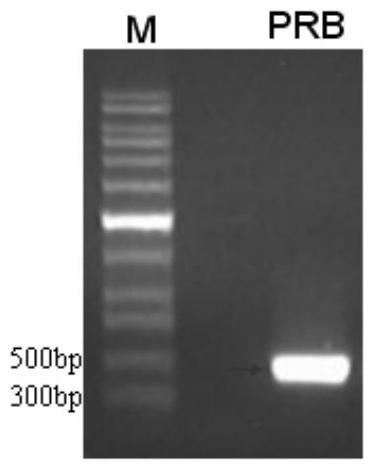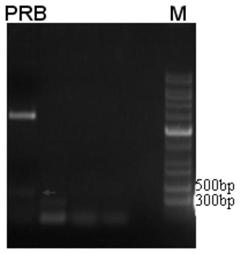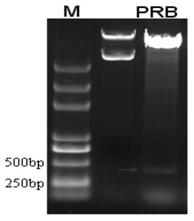A kind of method for producing mycelomycin with Artemisia annua
A technology of mycelia and Artemisia annua, applied in the fields of biotechnology and genetic engineering, can solve problems such as plasmid instability, decreased expression of exogenous mycelia gene, and decreased copy number
- Summary
- Abstract
- Description
- Claims
- Application Information
AI Technical Summary
Problems solved by technology
Method used
Image
Examples
specific Embodiment approach
[0119] Specific embodiments of the invention The sequences used in the examples are the sequences mentioned above
[0120] The method for producing Plectasin with Artemisia annua of the present invention, it comprises the following steps:
[0121] a. Transformation carrier T202;
[0122] b. Constructing the recombinant plasmid T202-Plec expressing plectasin gene in Artemisia annua cells;
[0123] c. Transform Artemisia annua with recombinant plasmid T202-Plec;
[0124] d. Screen positive transgenic Artemisia annua seedlings, and carry out real-time RT-PCR identification.
[0125] The specific operation process is:
[0126] 1. Transformation carrier T202
[0127] Clone the pRB fragment:
[0128] Using pCambia1300 as a template, design synthetic primers to amplify pRB ( figure 1 ). PCR reaction conditions: pre-denaturation at 94°C for 5 minutes, 30 cycles at 94°C for 30s-59°C for 30s-72°C for 70s, and 72°C for 7 minutes. After 2% agarose gel electrophoresis, the target ...
PUM
 Login to View More
Login to View More Abstract
Description
Claims
Application Information
 Login to View More
Login to View More - R&D
- Intellectual Property
- Life Sciences
- Materials
- Tech Scout
- Unparalleled Data Quality
- Higher Quality Content
- 60% Fewer Hallucinations
Browse by: Latest US Patents, China's latest patents, Technical Efficacy Thesaurus, Application Domain, Technology Topic, Popular Technical Reports.
© 2025 PatSnap. All rights reserved.Legal|Privacy policy|Modern Slavery Act Transparency Statement|Sitemap|About US| Contact US: help@patsnap.com



